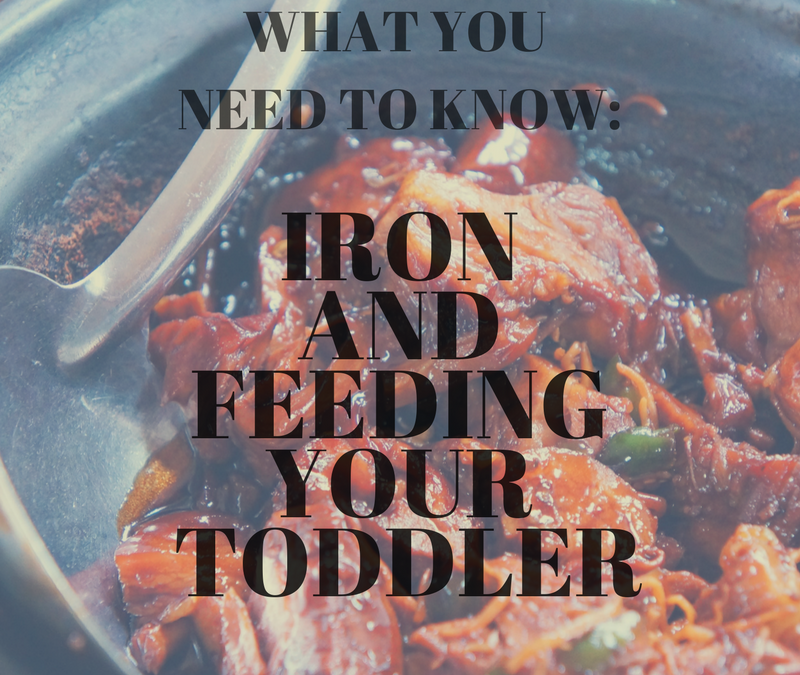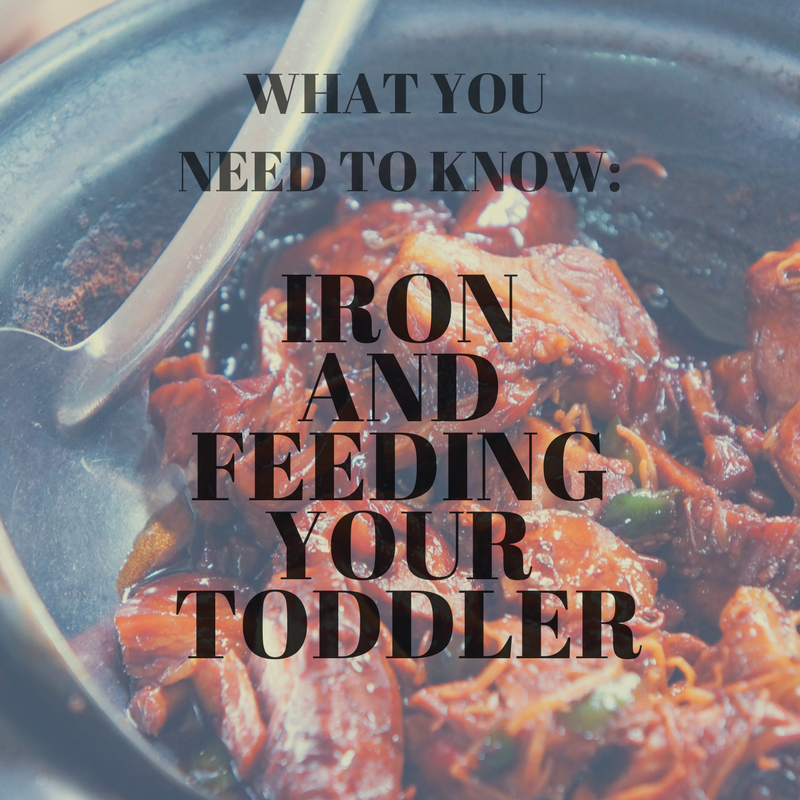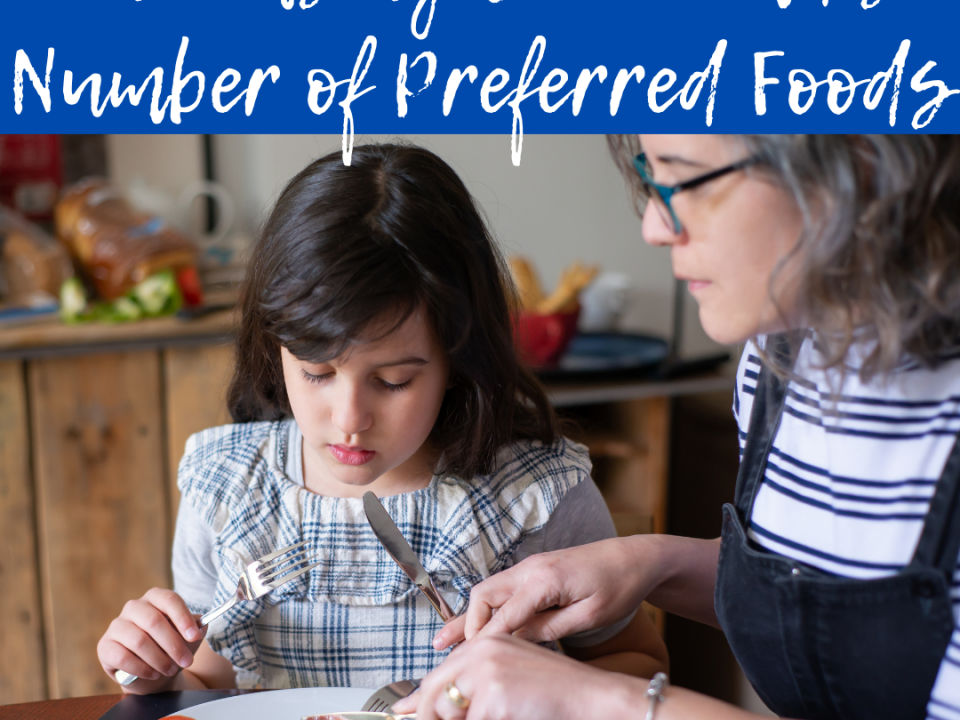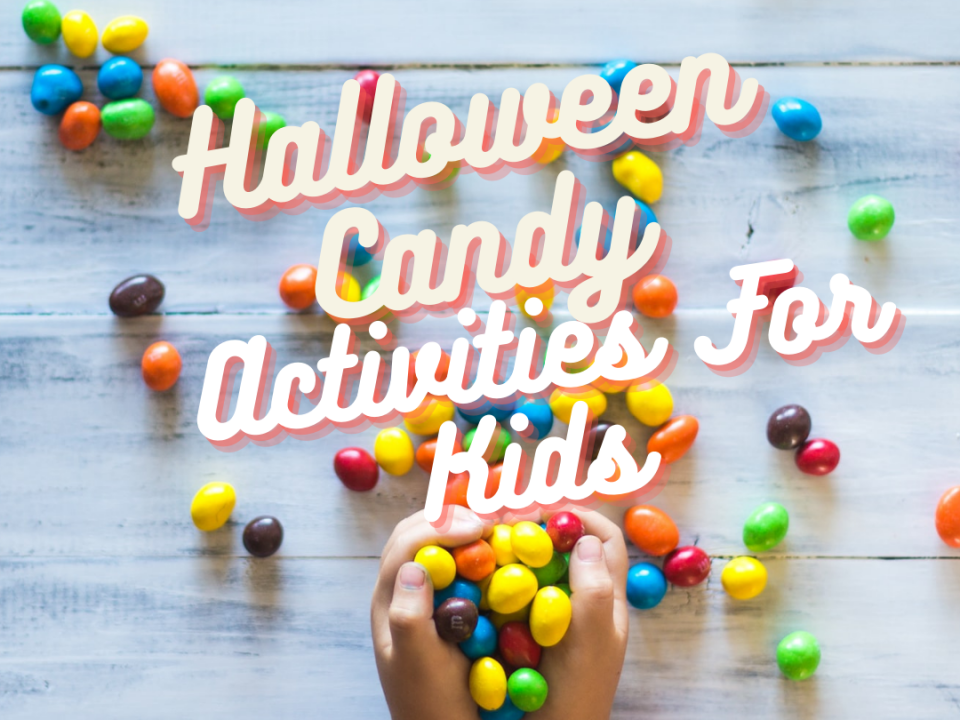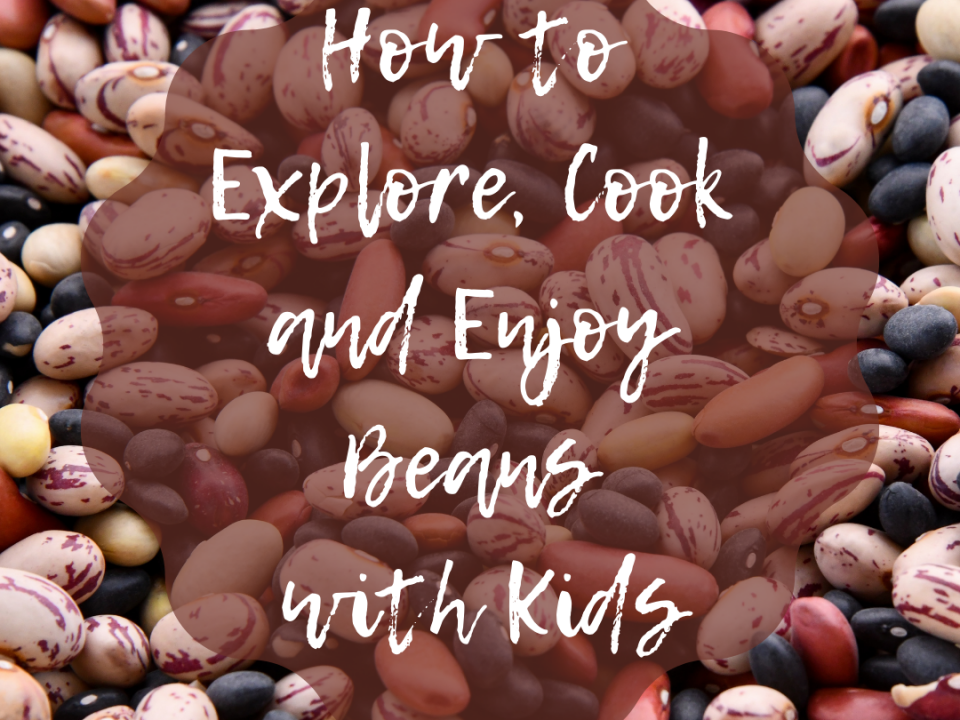What you need to know about Iron and Feeding Your Toddler

Instant Pot Chicken Coconut Curry
July 21, 2017
Vegetable and Cheese Sheet Pan Eggs
August 21, 2017Iron is another important nutrient for your growing and developing toddler. Iron is part of hemoglobin (a.k.a red blood cells), which helps transport oxygen to muscles and vital organs. Your little one is born with enough iron stores but around 6 months these stores slowly get depleted and need to be replaced by food, formula or supplementation. From 6-12 months you may have given your infant formula or cereal fortified with iron. But now that they are eating more solid foods getting iron from food is even more important.
What foods contain iron? Well both animal and plant based foods provide iron. The form found in animals (heme) is easily absorbed while plant based iron (non-heme) is less easily absorbed. Eating foods that contain Vitamin C like citrus fruits or green vegetables like broccoli along with non-heme iron source can actually increase the absorption of iron.
Top Sources of Iron
Meats (Heme)
- Beef
- Chicken
- Pork
- Turkey
Plant-Based (Non-Heme)
- fortified cereals (cherrios or infant cereals)
- peas
- beans and lentils
- enriched rice
- whole grain and enriched breads
- sweet potato
So what to do?! My advice is to offer your child one to two sources of iron per day. Vary the source of iron (heme and non-heme) this not only is a great way to introduce new foods, flavors and textures into your toddlers diet but also ensures they get an adequate amount of iron and other nutrients in their diet. Also try to incorporate a fruit or vegetable source of Vitamin C with iron containing foods to help increase absorption. Some sources include oranges, strawberries, raspberries, mango, kiwi, sweet potato, red bell peppers, tomatoes, pineapple, broccoli and cauliflower.
Also be aware of how much calcium/ dairy your little one is consuming. Calcium can bind to iron and decrease it’s absorption. Make sure to limit dairy intake to three servings a day. This is the equivalent of 3 cups (or 24 ounces) of milk. If your little one is anemic consider serving milk with meals or snacks that are lower in iron.

The truth is that it can take up to 10-20 “neutral” exposures for your toddler to try a new food.
A neutral exposure is when you offer a food in a neither positive nor negative way. I’m sure your wondering how does this actually work?! What you want to do is offer the food item by placing it on their plate. So in this case it might be placing a piece of chicken on their plate. If they eat it wonderful but don’t show your excitement. If they don’t eat it avoid pressuring them. You know those tactics “just try it you’ll like it” or “if you take a bite you can have dessert”. As much as you think they work in that moment, they don’t work over the long term. Instead continue to offer chicken(or insert other food) either the same way or switch it up from time to time and instead serve it in a mixed dish, with a dipping sauce, or in a soup. Overtime they will try it and hopefully develop a liking for it.
Overall, you want your child to have healthy eating habits for life not just in the moment so resist the urge to get upset if they don’t eat a specific food. To ensure they are getting enough iron, offer other sources you know your child will eat. For us it has been cheerios and beans. I make sure to at least offer one of these options each day either with a meal or snack.
For more about feeding your child and the neutral exposure check out the Ellen Satter Institute or head over to my resources page to see which books and podcasts I recommend for feeding your child.
Curious about other important nutrients in your toddlers diet? Check out this post on How Much Calcium and Vitamin D your Toddler Needs.
If you have other concerns about your child’s eating habits, please contact your pediatrician and a registered dietitian like myself.

